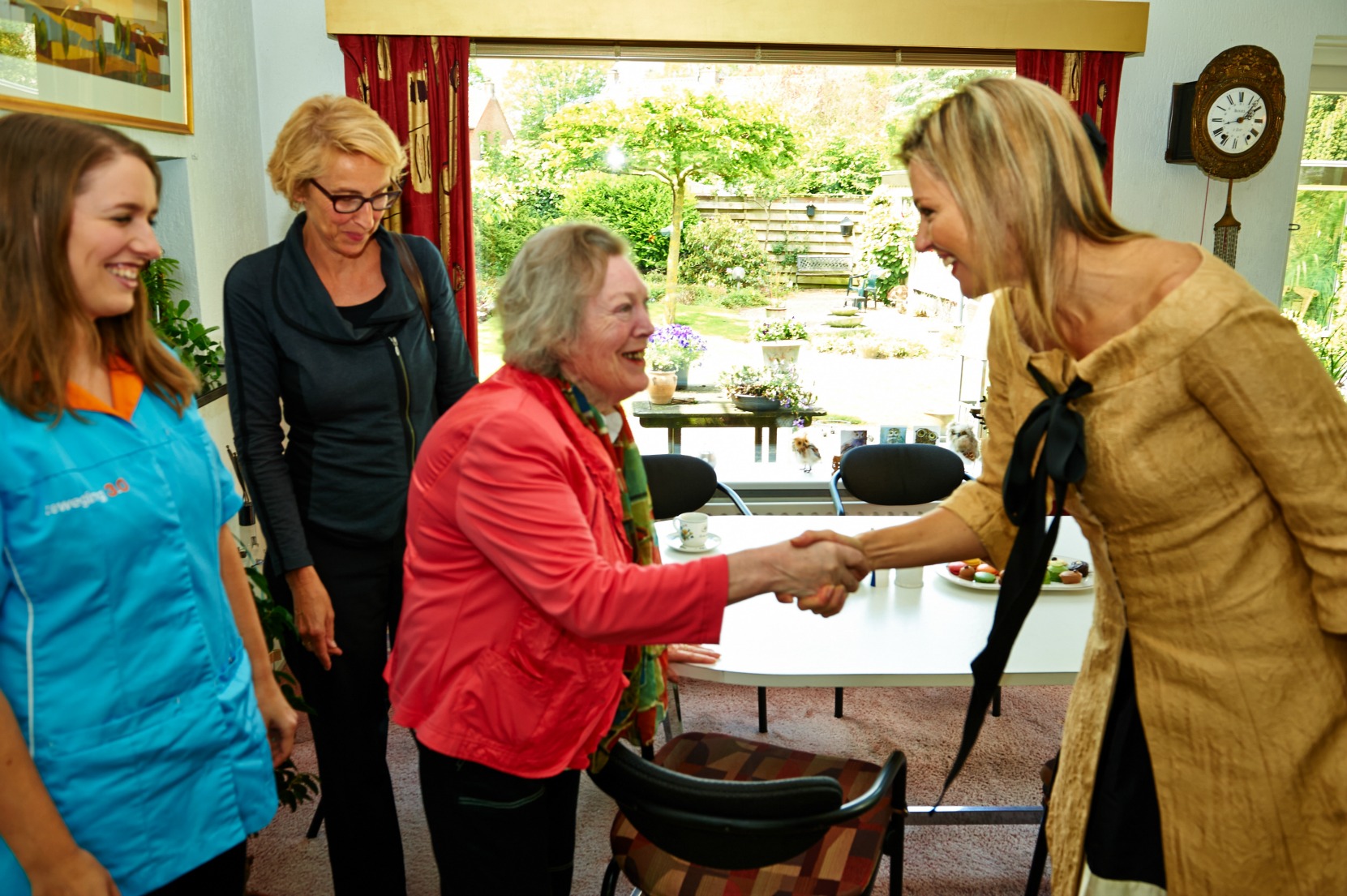Five success factors for healthcare innovation: are you applying them?
In a previous blog post I discussed ways to ensure innovation in your organization. But how do innovative healthcare organizations do it? What's their secret and what do they have in common? In my experience, many organizations view innovation as some kind of "trick". But it's not. In this post, I'll share five healthcare success factors, including several practical examples.
1. Innovate with vision
In order for an organization to innovate, it needs to create an atmosphere that challenges the status quo. This is often prompted by a managerial statement or proposal that can send employees into a panic.
"Innovation is not something you do on the side; it has to be part of the organization's DNA and based on a clear vision" During the fiftieth anniversary of Het Dorp, I remember the CEO of Siza telling me, "Our mission will be accomplished when we've helped our clients reach a level of independence that makes our help unnecessary." A vision like this prompts the organization to reflect on the real needs of its clients.
Siza is one of the most innovative healthcare organizations in their field. People with a disability can spend the night in so-called "PAS" houses, where they can try out various innovations. The new Dorp ("village") will include a state-of-the-art innovation center for robotics and other disciplines.
Innovation is not something you do on the side; it has to be part of the organization's DNA and based on a clear vision.
2. Create long-term healthcare innovation
Once innovation has been translated into a clear vision, you can move on to the next step. This step does not involve a hastily thrown-together pilot. Successful innovators don't take chances, they create innovation programs that last for years. "Innovation is also about admitting that failure is not an option"
Management does not tell people where to start. What they do is appoint an employee available, often a former healthcare professional, who takes a structured approach to identifying the organization's bottlenecks. This is done in a small team of two to three people and in consultation with clients and colleagues. The most important bottlenecks become the first innovation projects.
A good example of this is developed by ZuidZorg, the Innovatie Werkplaats ("innovation workspace") Proteion, or the innovation team at the research group developed by Beweging 3.0.All of these innovation teams determine the exact requirements and will cancel projects if the underlying idea doesn't work. Innovation is also about admitting that failure is not an option.
Queen Máxima meets Mrs. Moret and Jonneke Bodzinga from the innovation team at Beweging 3.0.
Another good example is the Domoticazorg ("home automation care") developed nine years ago by ZZG Zorggroep.They have implemented several large-scale innovations in recent years – not pilot studies, but real changes based on the needs of clients and employees.
3. Make sure the foundation is good
An innovation team can only be successful if the foundation is good. This sounds logical, but isn't always applied in practice. Examples include on-site Wi-Fi connections and modern devices for employees.
A great example that caused me considerable frustration in the beginning was at healthcare organization Omring in Hoorn. They were successful thanks to a very structured approach. For a long time, the individual responsible for innovation and ICT in the company prevented us from implementing the telemonitoring project we had carefully planned in consultation with the project leader.
At least, that's what I thought. In reality, his plan was perfect: he made sure that all employees had access to the right infrastructure before they started something new. Healthcare professionals were given iPhones and instead of creating a call center, virtual contact points were set up for the teams to ensure direct communication.
Once all of this was in place, the focus could be shifted to telemonitoring. With a solid foundation in place, the innovations really took off and became truly embedded in healthcare.
Similar examples can be seen at Azora, ActiVite and MeanderGroep Zuid-Limburg which also focused on creating an ICT infrastructure for field workers before moving on to the next step.
4. Focus on processes
"Healthcare organizations that implement successful innovations focus on change processes, not technology" Healthcare organizations that implement successful organizations focus on change processes, not technology. Good examples include Vitras and and Evean.The latter was even nominated for a prestigious award.
The video by healthcare organization ZuidOostZorg highlights the importance of involving idea generators (employees) in change processes. This ensures that innovations aren't stacked on top of current care services, but result in a substitution or prevention.
A well-known healthcare organization that has pursued this vision for some time now is Sensire, which created the animation below:
Source: Sensire YouTube channel
5. Focus: start small and get going
The last success factor is focus. On one hand, focus is about making a decision. You can't do it all. Innovation is fun, especially with a world of technological developments at your fingertips, but it can also be fleeting. It's easy to jump from one idea to the next only to realize after the fact that you failed to get anything up and running.
With regard to focus, I have a lot of respect for De Zorggroep.Their innovation team is extremely aware of what they want to do and focus all of their attention on that one subject. They only move on to the next subject after laying a solid foundation for the first. A great example of this is the innovative support they offer dementia caregivers. This was In voor zorg! nicely illustrated by
Get started because things change
A second aspect of focus is to get started, which is only possible if you start small. It's easy to get caught up in endless discussions about business cases, suppliers, and contracts. These are often "what-if" discussions. But the truth is, there's no way to know if an idea will be successful. The things you take as a certainty can easily change: suppliers change, healthcare funding changes.
Of course, it's important to have a theme, but start small so you can oversee the risk. You should also stay flexible so you can grow organically if you did hit a jackpot idea. Careful and continuous data analysis will help you act quickly when needed. Assist, which is active in various healthcare companies, is a good example. They start small and quickly scale up across all companies when an idea proves successful.
What can you do in-house and what should you outsource?
The final aspect of focus is deciding what to do in-house and what to outsource. In my experience, you should stick to what you know. That's why I firmly believe you should enter partnerships in which all parties focus on what they do best.
A lovely example is Pantein or AxionContinu. They are making great strides in terms of innovation by entering into unique partnerships with the business community and healthcare providers. Their primary focus is healthcare; all other issues are outsourced to their partners (a topic I'll discuss in more detail in a future post).
All about courage!
"If you want real innovation, you need to invest in the future" I realize these five points are easier said than done – they're hard. This is compounded by the fact that payment titles in the healthcare sector are calculated by multiplying the price by the volume. And what do innovations do? They reduce volume.
To truly innovate as a healthcare organization, you have to be willing to invest in the future. This makes you more flexible and ensures the right mindset. Innovation is all about courage!
Do you agree with these five success factors? Are you missing something? I'd love to hear what you think. Twitter or LinkedIn Via


